ASUS W90Vp: ATI Mobility Radeon HD 4870... with CrossFire
by Jarred Walton on May 29, 2009 5:00 AM EST- Posted in
- Laptops
Standard Gaming Performance
For those that want to see the "big picture", here are the results of our tests at 1680x1050 with other recently tested laptops. Once again, we included the desktop system as a point of reference. Many of these systems are using older driver versions, so updated drivers may help in some areas, but since these aren't dual GPU solutions driver updates don't tend to help quite as much. Note that in some cases we changed the way we tested or we added a new game, in which case we only have results from the ASUS W90Vp, Clevo D901C, and our desktop reference platform.
We'll start with the older titles; note that on the ASUS W90Vp, all of these results are with the initial drivers. It's worth noting that in many titles, the faster notebooks -- especially the W90Vp and the D901C -- are largely CPU limited. Titles where overclocking shows the greatest performance increase are indicative of CPU bottlenecks, and we've included the 1080p results as well to show CPU limitations. For reference, OC'ed 1080p results are gold, standard 1680x1050 results are red, and 1680x1050 OC'ed results are orange.
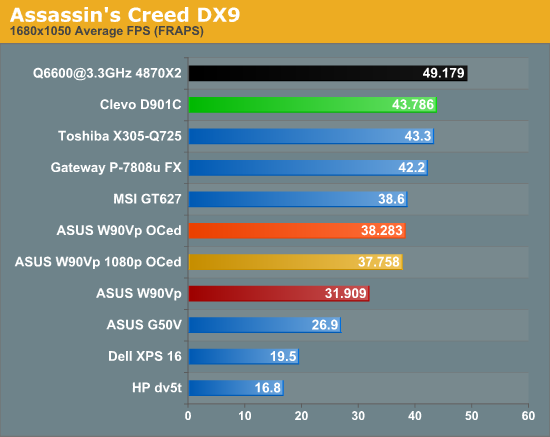
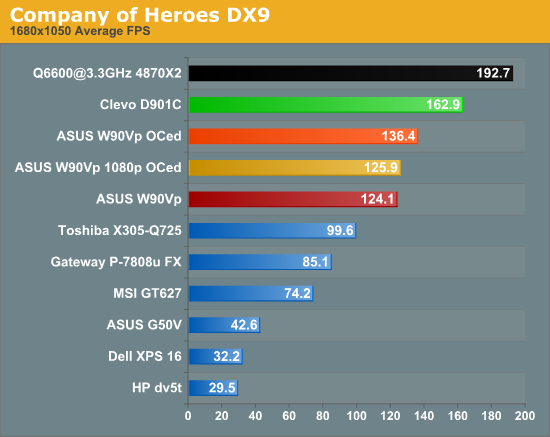
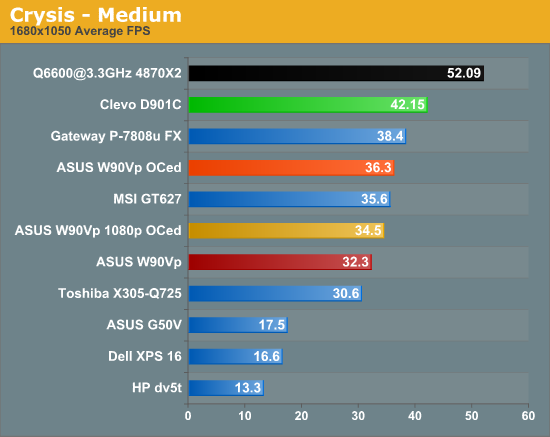
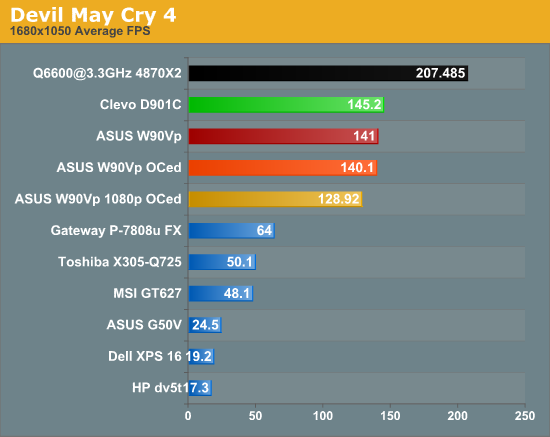
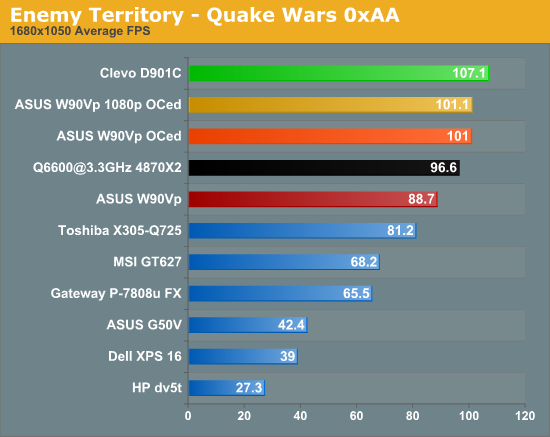

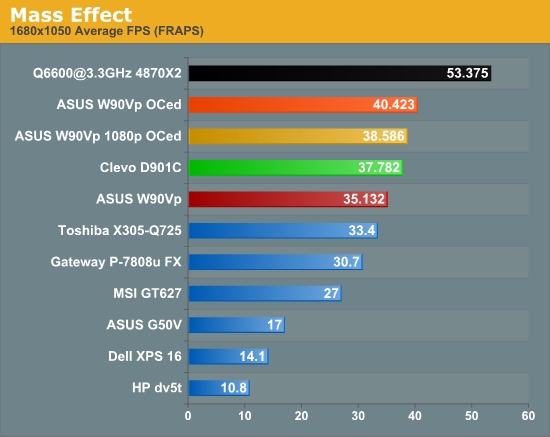
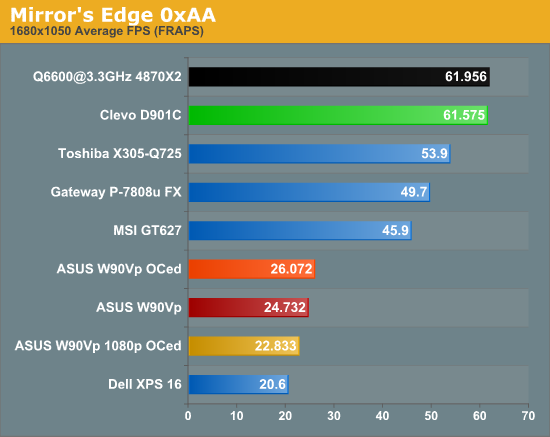
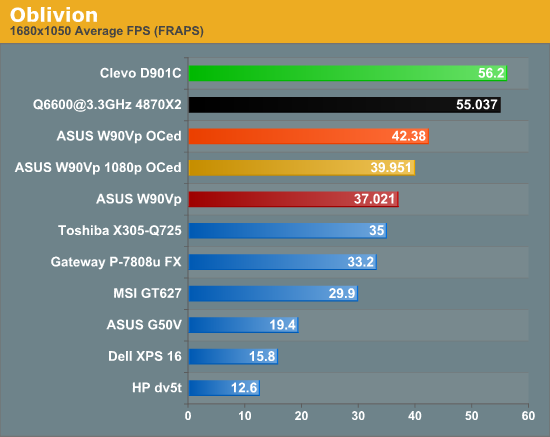

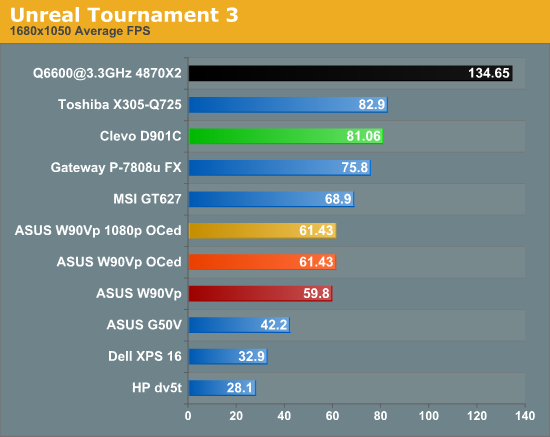
For the newer titles (or in the case of Fallout 3, a title where we changed the settings relative to previous articles), we tested with the same settings as the 1080p results. In other words, we used the initial driver, overclocked CPU with the initial driver, overclocked CPU with the new driver, and in a couple instances where it made a difference (Empire: Total War and STALKER: Clear Sky) we also tested the new driver without the Catalyst Control Center. In these charts, we highlighted the optimal W90Vp result in red -- as mentioned on the previous page, running without the CCC in most cases will offer equal or better performance.
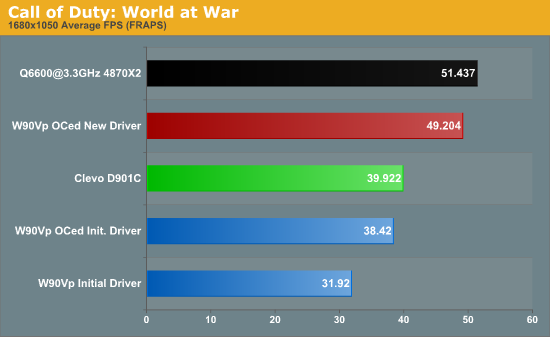
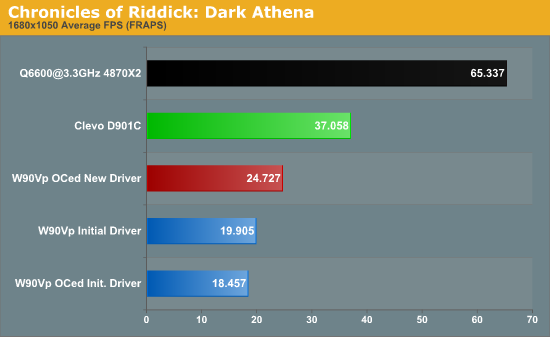

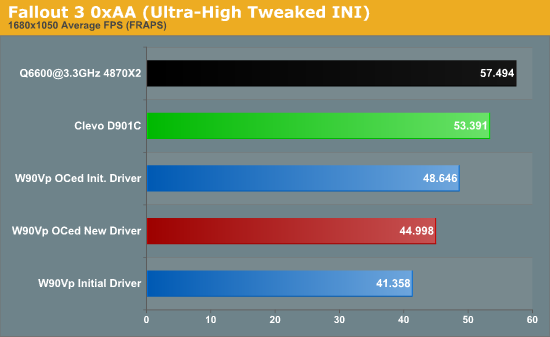
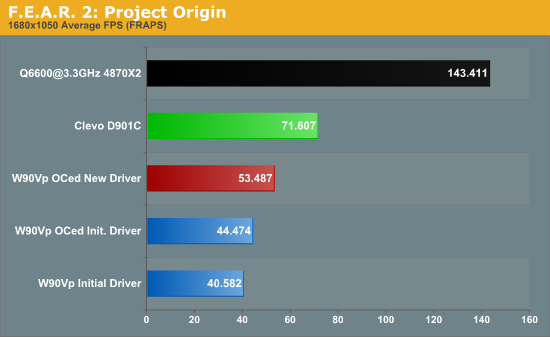
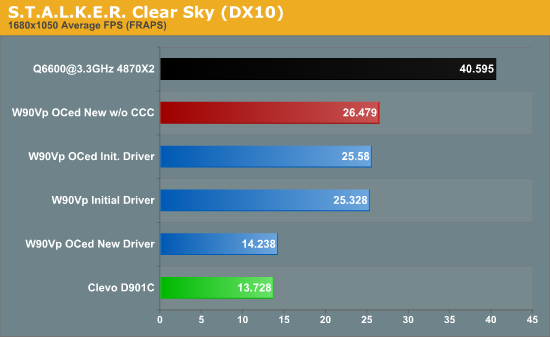










25 Comments
View All Comments
nubie - Friday, May 29, 2009 - link
Well. . .If there was a PCI-e standard for mobile, then maybe you could choose your graphics and the laptops would have to work properly with standard drivers?
What if you used DisplayPort for the interface to the display? Then you could plug in any graphics chip and it would work with the standard drivers.
You would of course need "thermal" stages, where you had a cap on the amount of power that it could dissipate, but if you wanted to set your PC on a fan and cut out a vent you could move up.
I think that a standard needs to be set already. There is no excuse for making a handful of extra or different pins, or form factors off by a few millimeters just so that you can't build your own system or upgrade it.
I would hope that as time progresses you could put a faster chip on a smaller more advanced process into an older laptop, or just choose the exact graphics you want (IE less powerful) in a system with the processing power you need.
JarredWalton - Friday, May 29, 2009 - link
Unfortunately, the biggest reason for a lack of unified mobile GPU standards is that OEMs along with ATI and NVIDIA like to compete in a variety of ways. Look at Apple and imagine trying to tell them they their laptops need to conform to a standard layout.It *could* happen, and for higher performance laptops with discrete GPUs like the W90Vp, that would be ideal. In fact, the GPU modules in the W90 look very similar to the GPU modules from NVIDIA. The problem is, no one wants to do the work to make sure upgraded GPUs would work -- plus you need to worry about having not just a standardized form factor, but standardized heatsinks/fans.
Ultimately, a standardized notebook form factor would probably lose more customers than it would gain. Everyone would complain about the "boring design and aesthetics", and the number of new bugs/problems we'd see would probably skyrocket. But hey, maybe someone will prove me wrong on this and make the idea work....
Goty - Friday, May 29, 2009 - link
Wait, NVIDIA managed to release drivers on all platforms simultaneously ONCE and suddenly they have a unified driver model? I'd have to wait and see if that trend continues down the road, but I'm not holding my breath.There's also the issue that a large number of notebooks simply won't accept the drivers directly from NVIDIA.
JarredWalton - Friday, May 29, 2009 - link
NVIDIA previously had a mobile driver program where they committed to quarterly updates, and they delivered on that three times (though the first wasn't quite "quarterly"). The drivers started out several months behind the desktop releases, and now we have drivers released on all platforms twice (185.81 and then the final 185.85) - though granted they're mostly the same thing.As far as laptops where the NVIDIA drivers won't work, are they in the "unsupported" list? They've worked on every laptop I've tried, which ranged from 8600M to 9500M to 8800M SLI to 9800M. What laptops specifically don't work or have problems? Or are these problems caused by old and cluttered Windows installs where malware or something else gets in the way?
If NVIDIA doesn't continue to release unified drivers, we'll certainly point it out, but at the same time they've already strongly committed to minimum quarterly updates. That's more than anyone else has done for mobile graphics.
rbfowler9lfc - Friday, May 29, 2009 - link
Really impressive battery life. You can watch a 1080p movie on the road, as long as it doesn't last longer than 1h. Bah!